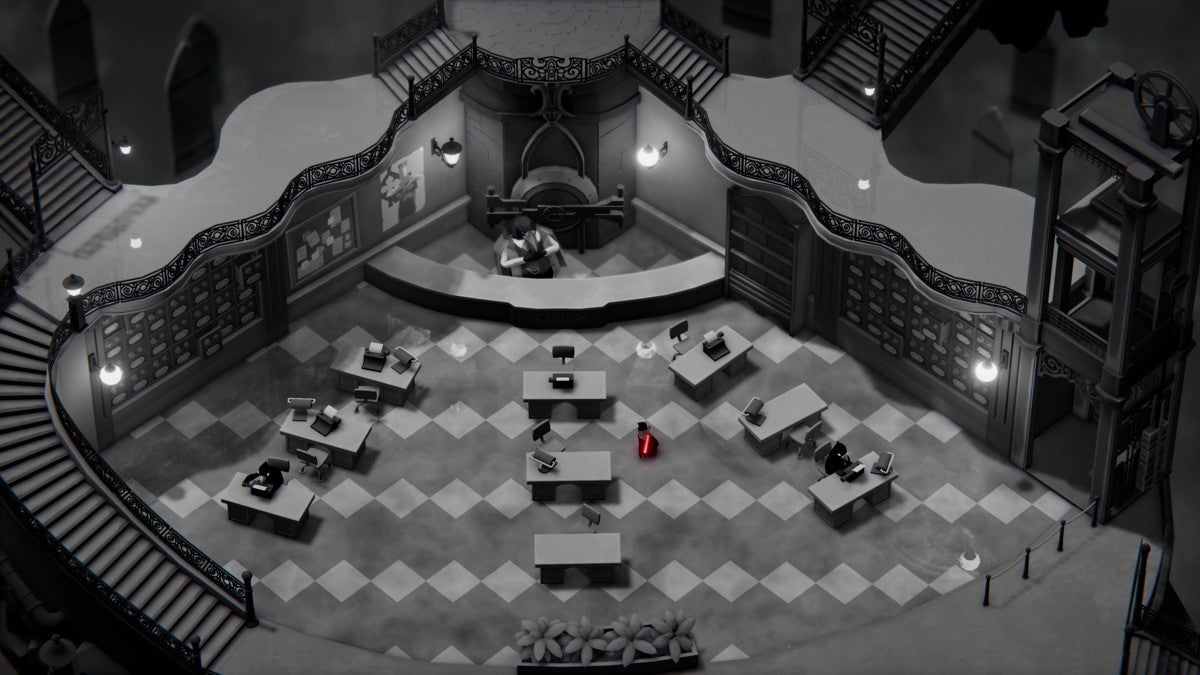Death’s Door is far and away one of the best indie games of the year. As someone who grew up playing classic 2D, isometric, action-adventure titles on the Sega Genesis, Super Nintendo, Game Boy, and a litany of other platforms, there’s a certain coziness about this game and its structure that I wasn’t expecting. While Death’s Door doesn’t reinvent the wheel, the way in which it combines ideas from a number of different popular games that came before it is done to great effect and makes it stand out in an already crowded indie space.
Videos by ComicBook.com
In a general sense, the best comparison to Death’s Door would be something along the lines of The Legend of Zelda: A Link to the Past. After being introduced to its world in the first hour or so, Death’s Door lets you loose with the task of finding three souls that will give you the ability to open the titular doorway. Each soul is tucked away in a different part of this world, each of which contains a different theme, motif, and boss. You’ll also meet an ever-intriguing cast of characters as you wander through all of these lands, as well.

Exploration is one of the strongest aspects of Death’s Door and the game really encourages you to go off of the beaten path as often as possible to find new items. Much like a Metroidvania title, you’ll come across certain areas or structures within Death’s Door that you won’t be able to interact with right away. Upon coming back later with the right abilities or gear, though, you’ll be able to further explore these locations and likely be rewarded with something unique. This structure and concept as a whole isn’t unique to Death’s Door, but I also think that the exploration in the game never felt too bloated. If you’re someone who likes to get 100% completion in titles like this, then Death’s Door doesn’t make it too complicated to do so.
On the gameplay front, most of Death’s Door will see you hacking and slashing your way through a number of enemies. While this might seem straightforward, the game does offset the relatively routine nature of combat by giving you a number of different weapons to use. Each of these weapons will have their own benefits and drawbacks, which allows you to find one that is more suitable for your own playstyle. Considering that most games of this style only give you one static sword-like weapon to use, I really appreciated the opportunity to mix things up.
Death’s Door also contains a number of secondary items that you can use as well, which is where combat begins to get a bit more depth. Your main character can use a bow, bombs, a fire spell, and a hookshot against foes. Assuming you explore enough, each of these skills can be upgraded, making their usefulness that much better. As the game went on, I really started to appreciate just how each of these skills could be used tactfully. The fire spell, in particular, became a personal favorite thanks to how it could consistently deal damage over time.

Boss fights don’t happen too often in Death’s Door, but the ones that are featured are quite a joy to play. Unlike most games of this style, I actually think boss battles are where the combat shines the brightest. They really test your ability to dodge, attack in a timely manner, and utilize all of the tools in your kit in an appropriate way. Considering how little health you often have in Death’s Door, I appreciated the challenge that these boss fights provided.
Speaking more to the characters that I mentioned above, part of what makes the cast within Death’s Door so strong is the game’s writing. While there is a somewhat dire tone cast upon all of Death’s Door, the bleak nature is greatly offset by the game’s tongue-in-cheek writing seen with most characters. You’ll come across a grave keeper that actively wants to die, a giant frog that considers himself a king, and a fellow who is literally named “Pothead,” to name a few. Nearly everyone that you interact with in Death’s Door is flippant in some manner, which makes for a lot of unexpected fun.

Above all else, the one thing that continues to stick with me long after I finished Death’s Door is the soundtrack. I’m a sucker for good video game music, and, for my money, Death’s Door might have the best original score of any game so far in 2021. Beyond just being good music on its own, what the soundtrack in this game does so well is set the tone for each area. So many tracks find a way to perfectly balance being eerie, lonely, ominous, and beautiful all at the same time. It might be weird to say that one of my favorite qualities of Death’s Door was the music, but I really cannot stress how great the score is.
If you’re looking for something bite-sized to dive into before this fall’s biggest releases come out, Death’s Door is a game to definitely have on your radar. Whether you’re a fan of old school adventure games, or you’re just looking for a new standout indie, Death’s Door is absolutely worth your time, money, and attention.
Rating: 4.5 out of 5
Death’s Door is available to play right now and is out on Xbox Series X/S, Xbox One, and PC platforms. A review code was provided by the publisher for the purpose of this review and the game was played on the Xbox Series X platform.








